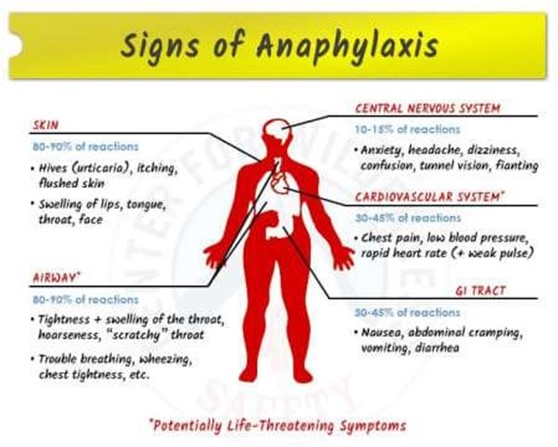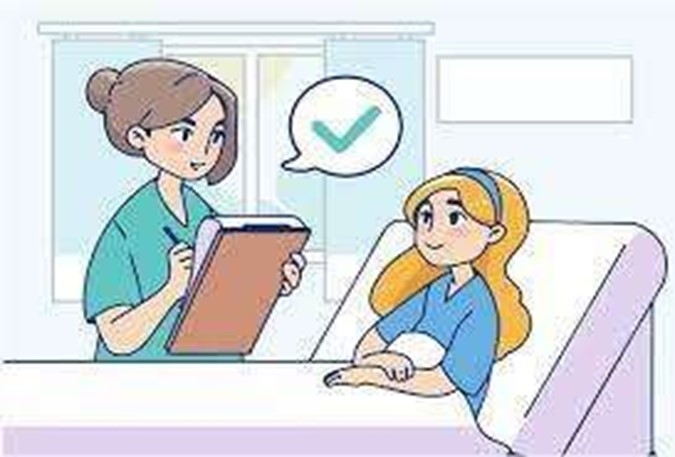A nurse is caring for a client who is receiving ceftriaxone intravenously.
Which of the following manifestations should the nurse identify as an allergic reaction?
Polyuria.
Hypotension.
Nausea.
Bradycardia.
The Correct Answer is B
This is because hypotension (low blood pressure) can be a sign of anaphylaxis, which is a severe allergic reaction that can occur with ceftriaxone.

Choice A is wrong because polyuria (increased urination) is not a common sign of an allergic reaction to ceftriaxone.
Choice C is wrong because nausea can be a side effect of ceftriaxone but is not specific to an allergic reaction.
Choice D is wrong because bradycardia (slow heart rate) is not a common sign of an allergic reaction to ceftriaxone.
Nursing Test Bank
Naxlex Comprehensive Predictor Exams
Related Questions
Correct Answer is D
Explanation
Ceftriaxone is contraindicated for this client because it is a cephalosporin antibiotic, which has a similar structure to penicillin and can cause cross-reactivity in individuals with a penicillin allergy.
Choice A is wrong because Vancomycin is not a beta-lactam antibiotic and does not have cross-reactivity with penicillin.
Choice B is wrong because Clarithromycin is a macrolide antibiotic and does not have cross-reactivity with penicillin.
Choice C is wrong because Metronidazole is a nitroimidazole antibiotic and does not have cross-reactivity with penicillin.
Correct Answer is C
Explanation
The nurse who identifies the error is responsible for completing an incident report.

Initial reports often come from the frontline personnel directly involved in an event or the actions leading up to it.
Choice A is wrong because the charge nurse is not necessarily responsible for completing an incident report.
Choice B is wrong because the quality improvement committee is not responsible for completing an incident report.
Choice D is wrong because the nurse who caused the error may not be aware of it and therefore may not be responsible for completing an incident report.
Whether you are a student looking to ace your exams or a practicing nurse seeking to enhance your expertise , our nursing education contents will empower you with the confidence and competence to make a difference in the lives of patients and become a respected leader in the healthcare field.
Visit Naxlex, invest in your future and unlock endless possibilities with our unparalleled nursing education contents today
Report Wrong Answer on the Current Question
Do you disagree with the answer? If yes, what is your expected answer? Explain.
Kindly be descriptive with the issue you are facing.
